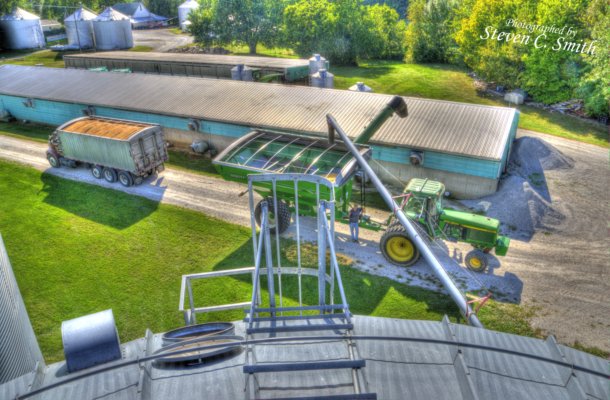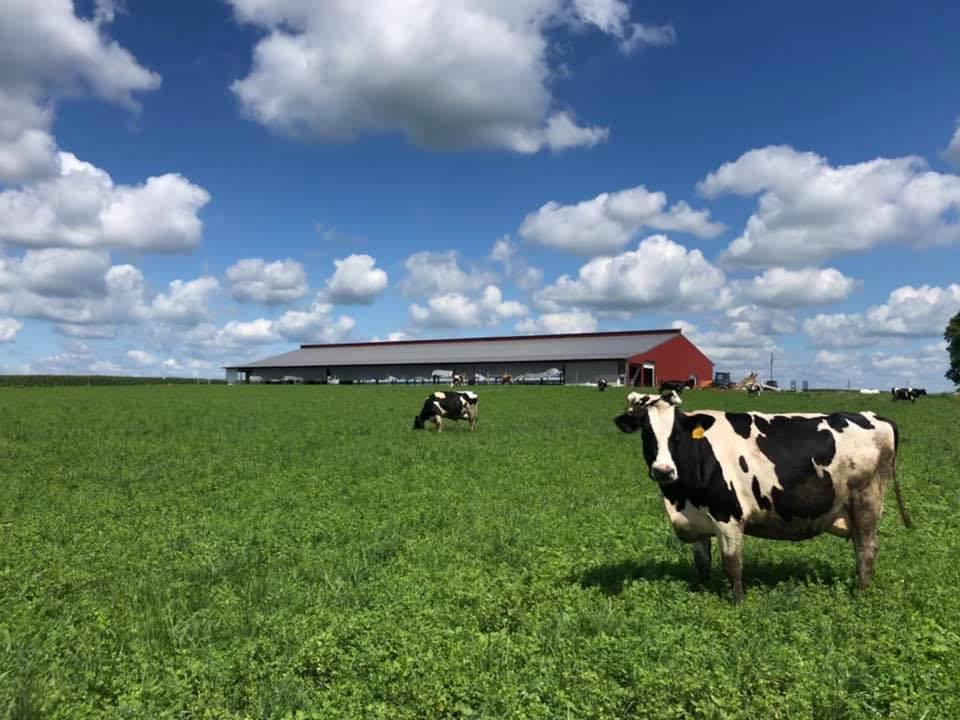Farm Education Conservation Camp

Farmers are possibly the first environmentalists - maintaining and improving the land to pass on to future generations. Environmental education is critical because of the complex environmental changes confronting the world including climate change, air and water pollution, and a loss of sensitive habitats. These complicated problems will be passed on to future generations. It is important that our youth have a basic understanding of the problems so they can make informed choices in their own lives. It is also important that they have an understanding of the science of how food, fiber and renewable, and non-renewable resource products are produced; value the essential role of agriculture in maintaining a strong economy; appreciate the role modern agriculture plays in providing a safe, abundant and affordable food supply; and consider career opportunities in science and technology that support that agriculture and natural resources conservation industry.
We have worked with many different people to bring you the following videos:
- Learning about Turkey Farming
- Exploring the Dairy Farm
- Pigs and Pork Production
- Eggs and Baby Chicks
- Dairy Goats at the Roberts Farm
- Exploring the Sheep Industry
Grains
Environment
- How Soil is Formed and Why it is Important
- Preventing Soil Erosion
- Why Trees are Important
- Midwest Habitats and the Adaptations
- Erosion and Weathering of Soils
- Introduction to Water Quality
- Tree Farming with Forester Jeff
Safety and Equipment
Animals
Learning about a Turkey Farm
Questions:
- How long does it take a turkey egg to hatch?
- How many baby turkeys can be held in each plastic box?
- Why could we not go into the barns at the turkey farm?
Exploring the Dairy Farm
John Carter, from the Carter Dairy Farm, takes us on a tour and explains how things work on a dairy farm.

Carter Dairy Farm was started in 2017 by Jeff, Kathy, and their son, John Carter. The farm - which includes a dairy, a swine operation, and surrounding cropland - has been in the family for over 100 years.
Interesting facts about cows:
- A grown cow weighs 1500-2000 pounds.
- A milking cow drinks enough water in a day to almost fill a bathtub.
- Many people think cows have 4 stomachs. They actually have one stomach with 4 compartments.
Questions:
- True or False? The Carter farm uses robots to milk their dairy cows.
- How many pounds of feed does a cow eat each day?
- What food products are made from the milk collected at the Carter farm?
Learning About Pigs and Pork Production
Ostler Family Farms teaches us about different types of pigs and explains pork production.
Questions:
- In the United States, where is Indiana pork production ranked?
- What are traits?
- Name one career that works with pigs.
- What is a father called in pork production?
- Fill in the blank: Species are broken down into ______.
Eggs and Baby chicks
Wonder what different chickens are called? Clinton County Extention helps us learn about chickens and eggs.
Questions:
- What is the female chicken called?
- How many days does it take to incubate a chicken egg?
- What temperature should the incubator be set at?
Dairy Goats at the Roberts Farm
Questions:
- What are three things you can make with goat milk?
- What are the three most important things goats need?
- How many stomachs does a goat have?
Exploring the Sheep Industry
Questions:
- True or False? There are over one million different breeds of sheep that exist throughout the world.
- What do we call a mother sheep?
- What do we call a group of sheep?
Grains
Grains and Teaching Bread in a Bag
Questions:
- True or False? Bread baking is a science.
- Fill in the blank: ______ is the process of developing dough into a smooth, elastic ball.
- Which grain produces more protein than any other crop?
All About Popcorn
Questions:
- What is the #1 snack food in the world?
- Indiana ranks #______ in the nation in popcorn production?
- What makes popcorn pop?
Environment
How Soil is Formed and Why it is Important
Questions:
- Where was the soil made from?
- What is weathering?
- What are the 5 factors for soil formation?
Preventing Soil Erosion
Questions:
- Top soil is not very______. (A. Thick B. Dark C. Compacted D. Useful)
- When did top soil become important to the public?
- What can you do as a homeowner to help prevent soil erosion?
Why Trees are Important
Questions:
- About what percent of Indiana is in forest land?
- Describe an example of how trees benefit us.
- If a tree has rings close together, what does this mean?
Tree Farming with Forester Jeff
Questions:
- Forester Jeff uses a special measuring tape that divides the circumference of a tree by pi (3.14) to determine what?
- True or False? The purpose of thinning trees from a tree plantation is to get rid of trees that will never grow in value.
- True or False? Hardwood forests are an Indiana resource.
Erosion and Weathering of Soils
Questions:
- Do rocks undergo decomposition or weathering?
- Which material has the smallest particle size: silt, clay, or sand?
- True or False? The soil never tells us about the environment of the past.
- True or False? Buffer zones help prevent erosion by keeping soil where it is supposed to be.
Midwest Habitats and the Adaptations Needed for Animal Survival
Tippecanoe County Naturalist, Mary Cutler, discusses midwestern habitats, things that are needed to form a habitat, and adaptions of animals needed to survive in these habitats.
Questions:
- What are the four components of habitat?
- Describe animal adaptations.
- What must be found in an area before wildlife can occur there?
- What are the three main habitat areas found in Indiana?
Introduction to Water Quality
Questions:
- What tool is used to measure water transparency?
- What do we call the area next to the edge of a water source that filters out sediment and pollutants?
- What is the number one pollutant in Indiana waterways?
Safety and Equipment
Thinking about Safety on the Farm
Grain Bin Safety
Installing field tile for drainage
Flight of the Phantom 4
Adam Shanks, Purdue University Extension Educator, demonstrates how a Phantom 4 works and takes us on a flight over the Clinton County Fairgrounds.
Questions:
- What is the maximum altitude you can legally fly a UAV/Drone?
- What is the maximum speed you can legally fly a UAV/Drone?
- What type of UAV/Drone was demonstrated in this program?
We would like to thank everyone who helped create and support this program.
Special thanks go out to
- Clinton County Soil and Water Conservation District
- Clinton County Farm Bureau Inc.
- Clinton County Purdue Extension
- Purdue University Superheroes of Science